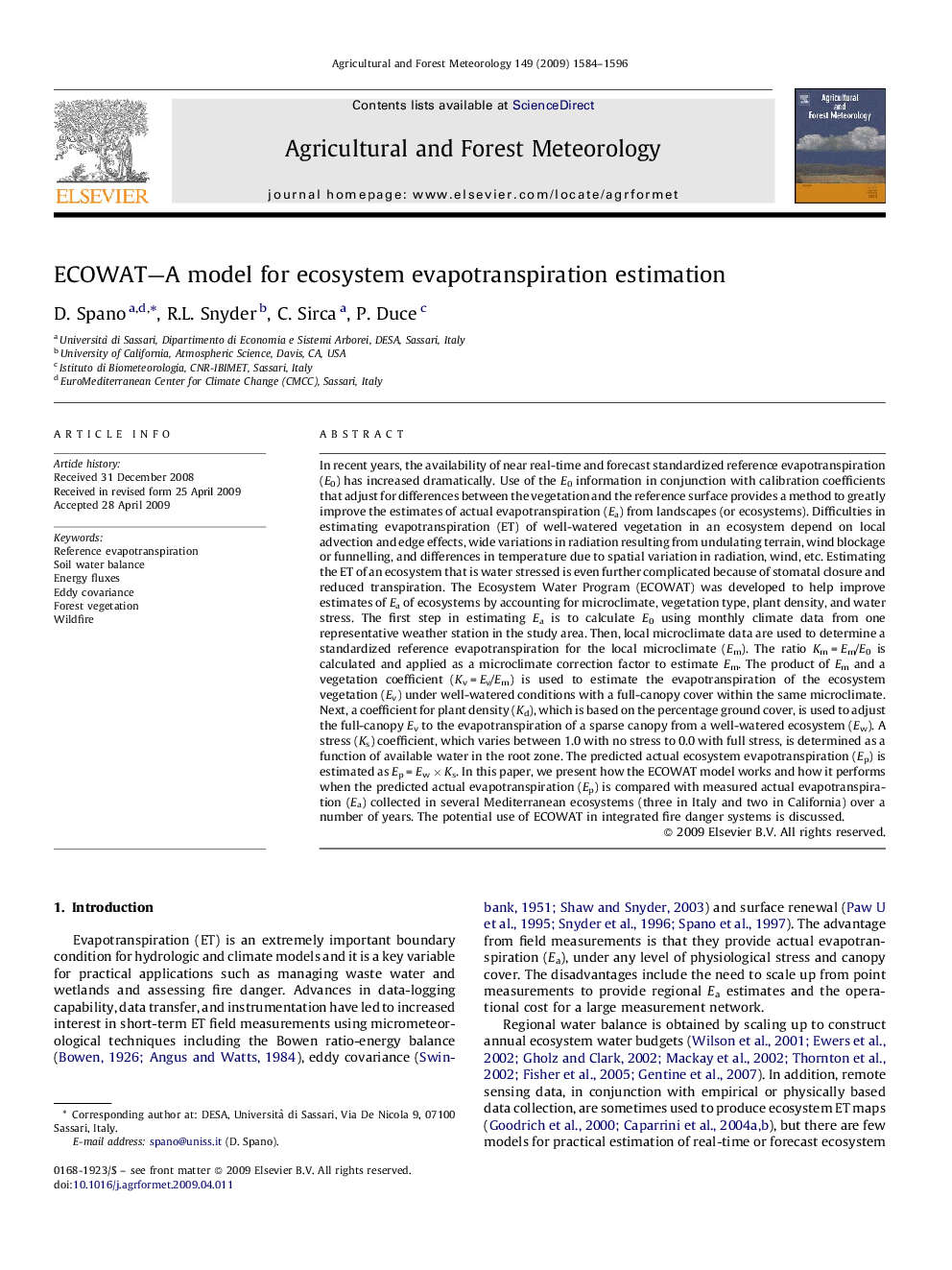| کد مقاله | کد نشریه | سال انتشار | مقاله انگلیسی | نسخه تمام متن |
|---|---|---|---|---|
| 82613 | 158405 | 2009 | 13 صفحه PDF | دانلود رایگان |

In recent years, the availability of near real-time and forecast standardized reference evapotranspiration (E0) has increased dramatically. Use of the E0 information in conjunction with calibration coefficients that adjust for differences between the vegetation and the reference surface provides a method to greatly improve the estimates of actual evapotranspiration (Ea) from landscapes (or ecosystems). Difficulties in estimating evapotranspiration (ET) of well-watered vegetation in an ecosystem depend on local advection and edge effects, wide variations in radiation resulting from undulating terrain, wind blockage or funnelling, and differences in temperature due to spatial variation in radiation, wind, etc. Estimating the ET of an ecosystem that is water stressed is even further complicated because of stomatal closure and reduced transpiration. The Ecosystem Water Program (ECOWAT) was developed to help improve estimates of Ea of ecosystems by accounting for microclimate, vegetation type, plant density, and water stress. The first step in estimating Ea is to calculate E0 using monthly climate data from one representative weather station in the study area. Then, local microclimate data are used to determine a standardized reference evapotranspiration for the local microclimate (Em). The ratio Km = Em/E0 is calculated and applied as a microclimate correction factor to estimate Em. The product of Em and a vegetation coefficient (Kv = Ev/Em) is used to estimate the evapotranspiration of the ecosystem vegetation (Ev) under well-watered conditions with a full-canopy cover within the same microclimate. Next, a coefficient for plant density (Kd), which is based on the percentage ground cover, is used to adjust the full-canopy Ev to the evapotranspiration of a sparse canopy from a well-watered ecosystem (Ew). A stress (Ks) coefficient, which varies between 1.0 with no stress to 0.0 with full stress, is determined as a function of available water in the root zone. The predicted actual ecosystem evapotranspiration (Ep) is estimated as Ep = Ew × Ks. In this paper, we present how the ECOWAT model works and how it performs when the predicted actual evapotranspiration (Ep) is compared with measured actual evapotranspiration (Ea) collected in several Mediterranean ecosystems (three in Italy and two in California) over a number of years. The potential use of ECOWAT in integrated fire danger systems is discussed.
Journal: Agricultural and Forest Meteorology - Volume 149, Issue 10, 1 October 2009, Pages 1584–1596